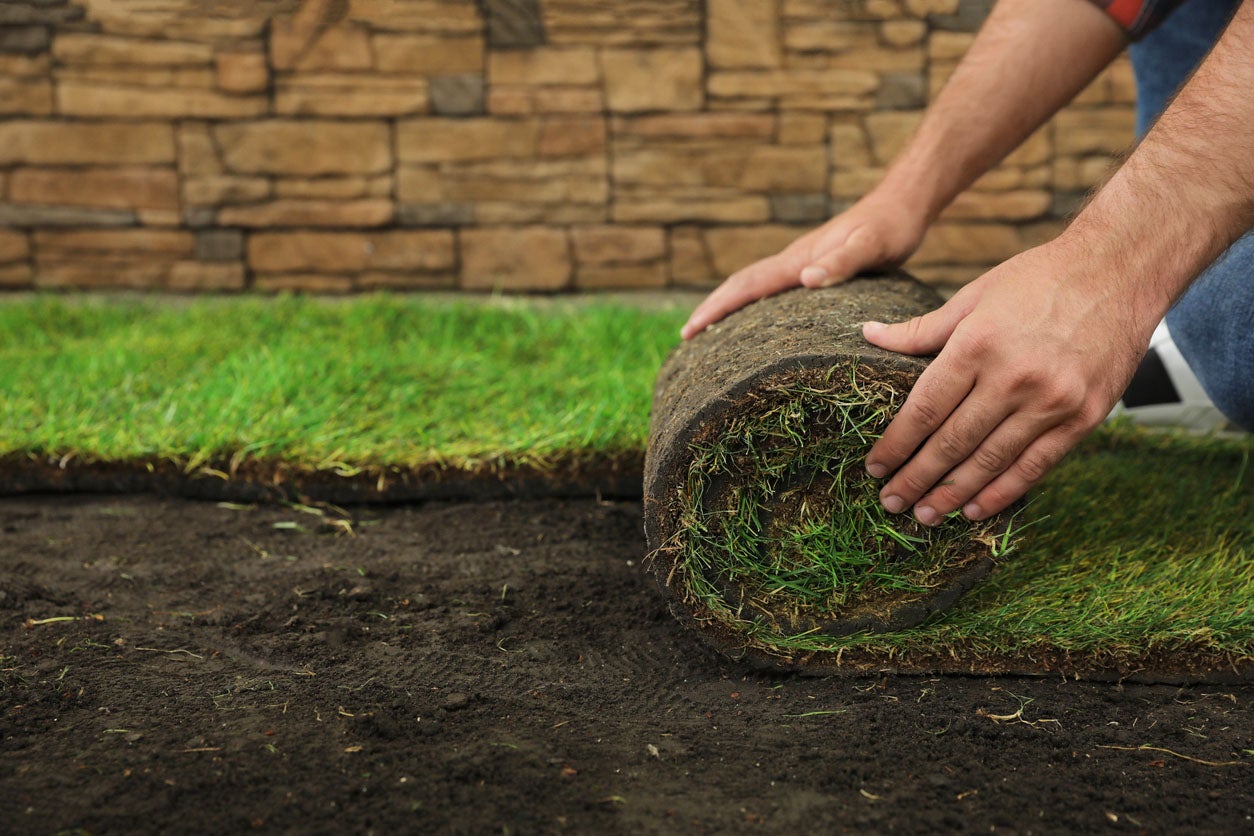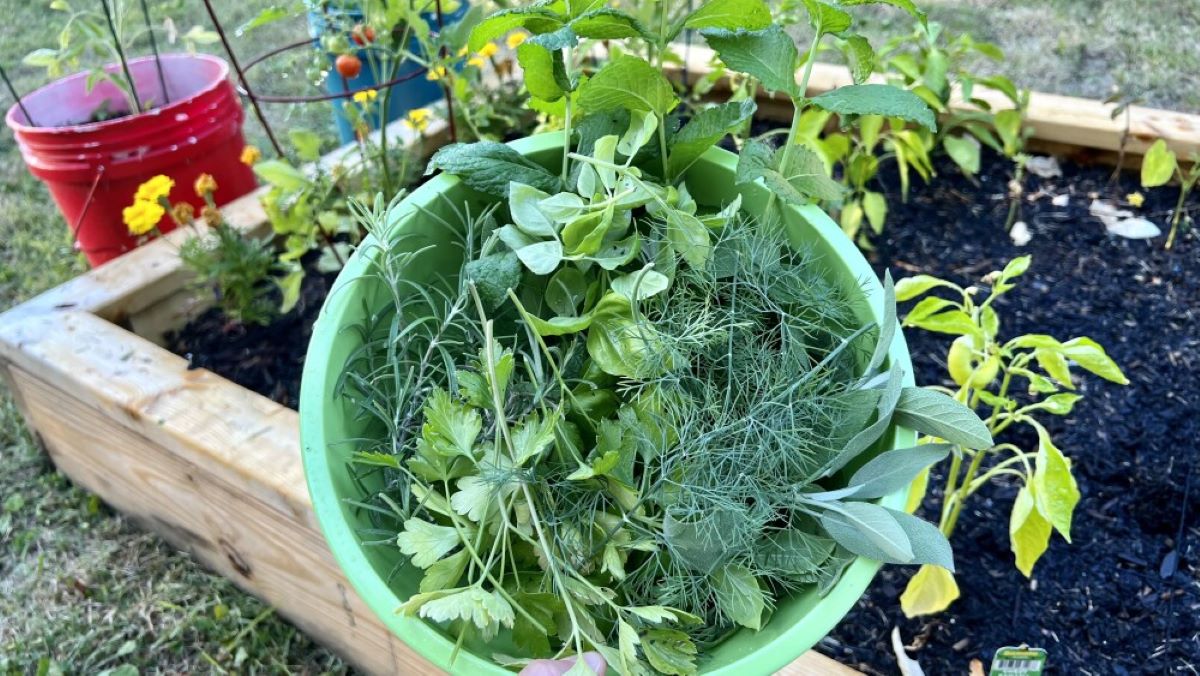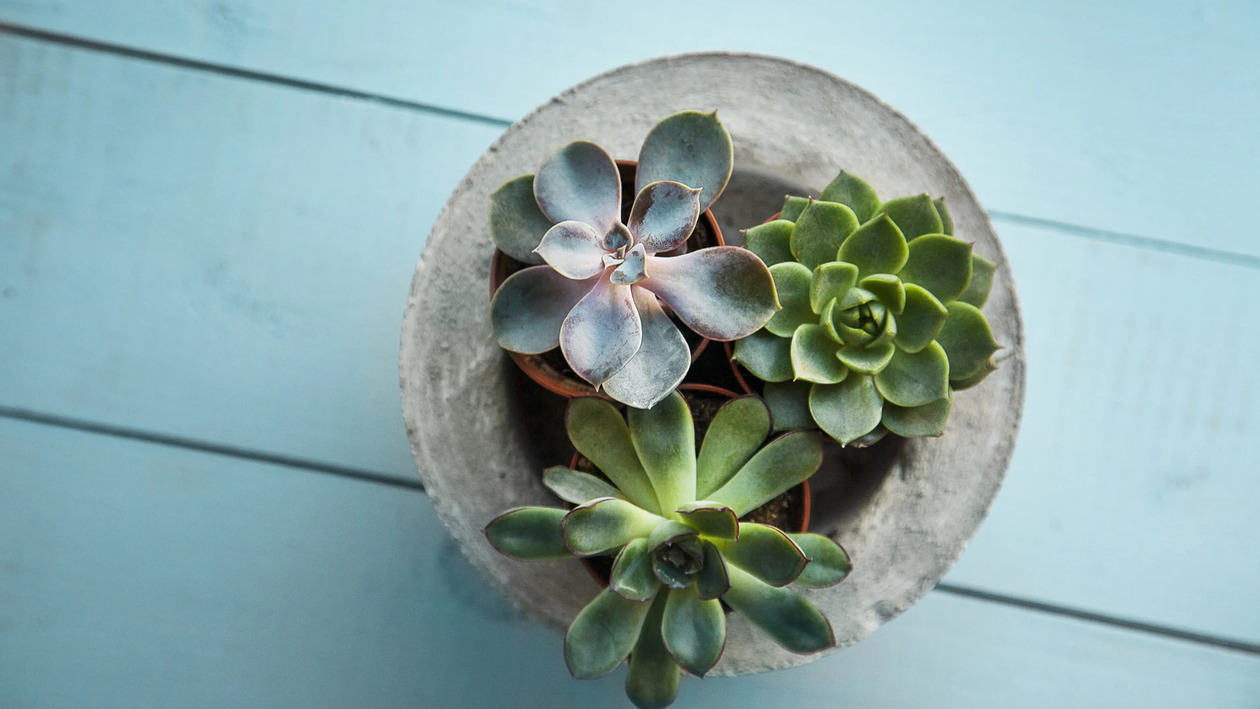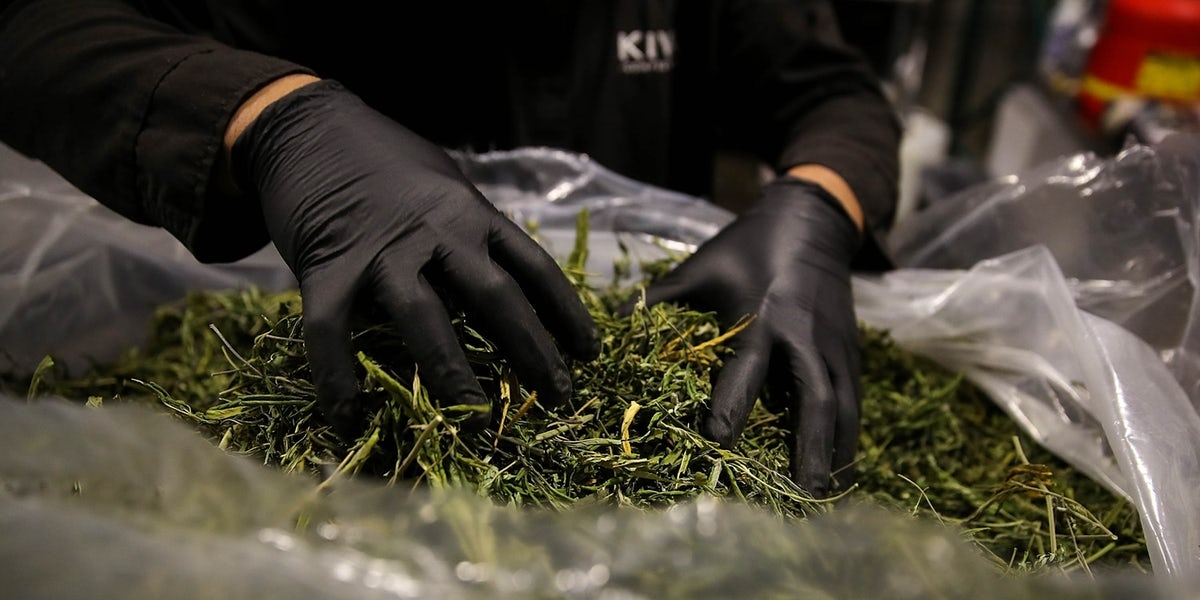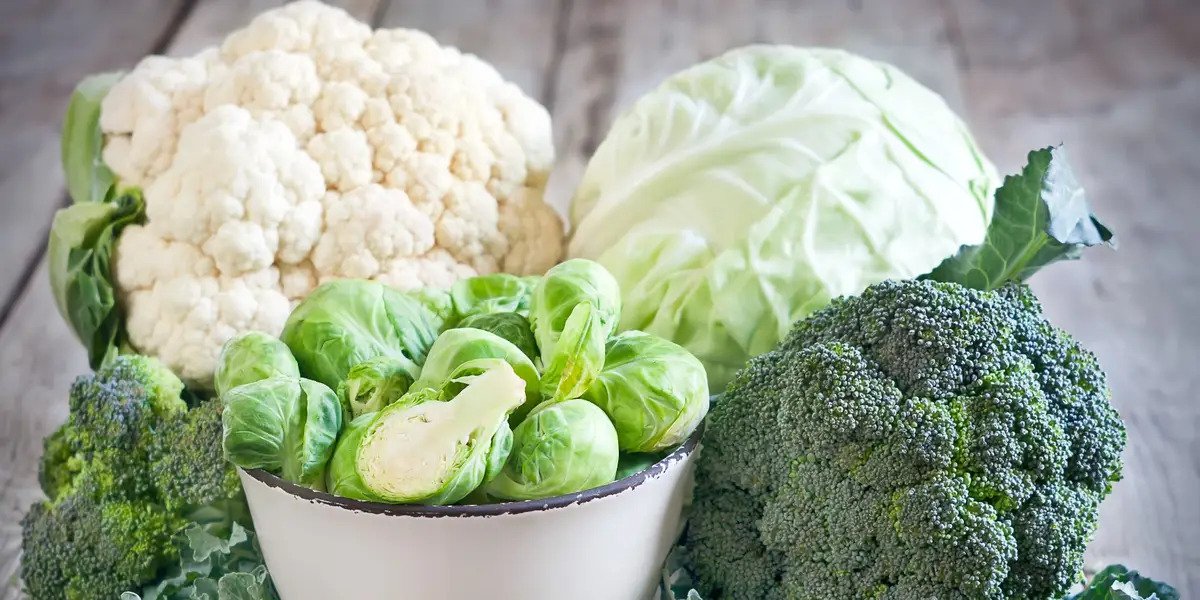Home>Gardening Basics>Understanding Soil>How Do You Make Topsoil
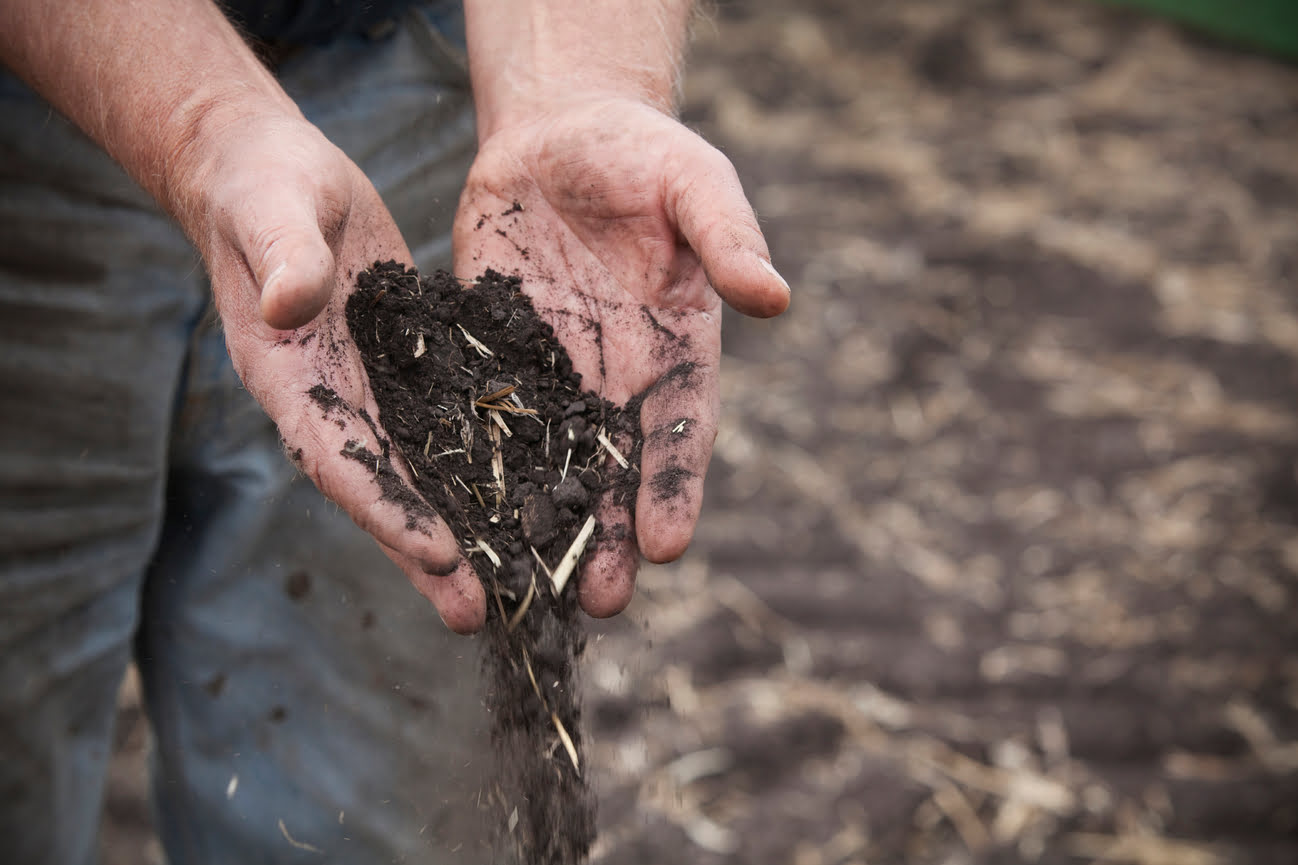

Understanding Soil
How Do You Make Topsoil
Modified: February 10, 2024
Learn the secrets of making topsoil with our comprehensive guide! Understanding soil is the key to creating nutrient-rich, fertile ground for your plants.
(Many of the links in this article redirect to a specific reviewed product. Your purchase of these products through affiliate links helps to generate commission for Chicagolandgardening.com, at no extra cost. Learn more)
Table of Contents
- Introduction
- What is Topsoil?
- Importance of Topsoil
- Factors Involved in Topsoil Formation
- Natural Processes in Topsoil Formation
- Human Activities Influencing Topsoil Creation
- Steps to Make Topsoil
- Choosing the Right Location for Creating Topsoil
- Preparing the Site for Topsoil Creation
- Selecting Organic Materials for Topsoil Formation
- Layering Organic Materials for Topsoil
- Providing Proper Moisture for Topsoil Formation
- Aeration Techniques for Topsoil Creation
- Managing Nutrient Levels in Topsoil
- Maintaining and Improving Created Topsoil
- Conclusion
Introduction
When it comes to gardening, landscaping, or agricultural practices, the quality of the soil plays a crucial role in determining the success and productivity of your endeavors. One significant aspect of soil that gardeners and farmers pay attention to is topsoil. But what exactly is topsoil, and why is it so important?
Topsoil refers to the uppermost layer of soil, typically ranging from a few inches to a foot in depth, that contains a combination of organic matter, minerals, nutrients, and microorganisms. It is this layer that supports plant growth and provides the necessary foundation for healthy and thriving vegetation.
The significance of topsoil lies in its ability to retain moisture, provide nutrients, and facilitate the movement of air and water through the soil profile. It serves as a reservoir for plant roots, enabling them to access essential elements for growth and development. Additionally, topsoil acts as a medium for a diverse range of organisms, including bacteria, fungi, insects, and earthworms, which contribute to the overall health and fertility of the soil.
Unfortunately, topsoil can be easily eroded or depleted due to natural processes and human activities. Factors such as wind, water, deforestation, and improper land management can lead to the loss of topsoil, causing a decline in soil quality and agricultural productivity. To counteract this, many gardeners and farmers resort to creating their own topsoil, ensuring that they have a fertile and nutrient-rich foundation for their plants.
In this article, we will explore the process of making topsoil, including the factors involved in its formation, natural processes influencing it, and the steps you can take to create and maintain high-quality topsoil. By understanding the principles behind topsoil creation, you will be equipped with the knowledge to improve soil fertility, promote healthy plant growth, and enhance your gardening or farming endeavors.
What is Topsoil?
Topsoil is the uppermost layer of soil that covers the Earth’s surface. It is a vital component of the soil profile and plays a critical role in supporting the growth of plants and sustaining ecosystems. Generally, topsoil is characterized by its high organic matter content, nutrient richness, and diverse microbiological activity.
The composition of topsoil can vary depending on factors such as climate, geography, and parent material. It typically consists of a mixture of mineral particles, organic matter, water, air, and a complex network of microorganisms and macroorganisms. The mineral component of topsoil comprises varying proportions of sand, silt, and clay particles, which contribute to the soil’s texture and structure.
One of the distinguishing features of topsoil is its organic matter content. This component is derived from decaying plant and animal material, as well as the residues of microorganisms. Organic matter serves as a source of nutrients for plants, improves soil structure, and enhances the soil’s water-holding capacity.
Topsoil also acts as a reservoir for essential plant nutrients. Nutrients such as nitrogen, phosphorus, potassium, calcium, and magnesium are present in varying concentrations within the topsoil profile. These nutrients are vital for plant growth and are typically absorbed by plant roots as they grow in search of resources.
In addition to the organic matter and nutrient content, topsoil harbors a complex community of microorganisms, including bacteria, fungi, protozoa, and nematodes. These soil-dwelling organisms play critical roles in nutrient cycling, organic matter decomposition, and soil fertility.
Overall, topsoil provides the necessary foundation for plant growth and sustains a healthy and balanced ecosystem. It serves as a habitat for organisms, regulates water movement, filters pollutants, and supports the growth of vegetation that forms the base of food chains and ecosystems.
Understanding what topsoil is and its importance is vital for gardeners, farmers, and landowners. By recognizing the value of this valuable resource, we can implement sustainable practices to preserve and enhance topsoil quality, ensuring the long-term productivity and viability of our agricultural and natural landscapes.
Importance of Topsoil
The significance of topsoil cannot be overstated when it comes to the health and productivity of our gardens, landscapes, and agricultural systems. Let’s delve into why topsoil is so important and its crucial role in sustaining plant life and ecosystems.
1. Nutrient Source: Topsoil serves as a reservoir of essential nutrients for plants. It contains a rich supply of organic matter, minerals, and microorganisms that release and cycle nutrients, providing a steady and diverse supply to support plant growth. Without adequate topsoil, plants may struggle to access the necessary nutrients for their development.
2. Water Retention: The organic matter and structure of topsoil contribute to its impressive water-holding capacity. Topsoil has the ability to retain moisture, allowing plants to access water during dry periods. This is crucial for plant health, especially in regions with limited rainfall or during drought conditions.
3. Soil Structure and Aeration: Topsoil plays a vital role in maintaining soil structure, which determines how easily roots can penetrate the soil and access nutrients. It also impacts the movement of air through the soil profile, facilitating root respiration and the activity of beneficial soil organisms. A healthy and well-structured topsoil promotes robust root growth and overall plant vigor.
4. Soil Erosion Prevention: Topsoil acts as a protective layer against erosion. It helps to bind soil particles together, reducing the risk of soil erosion caused by wind or water. Loss of topsoil through erosion can lead to degraded soil quality and reduced agricultural productivity.
5. Biological Activity: Topsoil is home to a diverse array of microorganisms, including bacteria, fungi, and earthworms. These organisms decompose organic matter, release nutrients, and improve soil structure. They also enhance soil fertility and contribute to overall ecosystem health.
6. Habitat for Soil Organisms: Topsoil provides a habitat for a range of organisms, including beneficial insects, earthworms, and soil-dwelling microorganisms. These organisms contribute to the breakdown of organic matter, nutrient cycling, and the suppression of harmful pests, promoting a healthy and balanced ecosystem.
7. Agricultural Productivity: In agricultural systems, topsoil is paramount for high-yield crop production. It supports the growth of strong and healthy plants, ensuring adequate nutrient availability, water retention, and root development. Well-maintained topsoil enhances soil fertility and resilience, leading to increased crop productivity and profitability.
By recognizing the importance of topsoil, we can implement practices to protect and enhance its quality. These practices include minimizing soil erosion, incorporating organic matter, practicing crop rotation, and reducing chemical inputs. By preserving and nurturing topsoil, we ensure the long-term viability and sustainability of our gardens, landscapes, and agricultural systems.
Factors Involved in Topsoil Formation
The formation of topsoil is a complex process influenced by various factors that interact over long periods. Understanding these factors is essential for creating and maintaining high-quality topsoil. Let’s explore the key factors involved in topsoil formation.
1. Parent Material: The parent material refers to the underlying geological material from which soil forms. It can be a combination of rocks, minerals, and organic matter. The composition and characteristics of the parent material strongly influence the properties of the resulting topsoil, including texture, mineral content, and drainage capacity.
2. Climate: Climate plays a significant role in topsoil formation. Factors such as temperature and precipitation affect the rate of organic matter decomposition, weathering of rocks, and soil erosion. For example, in areas with high rainfall, leaching of nutrients may occur, while in arid regions, evaporation can lead to the accumulation of salts.
3. Time: Topsoil formation is a slow process that occurs over hundreds to thousands of years. Over time, weathering processes break down rocks into smaller particles, and organic matter accumulates as plant materials decompose. The longer the time, the more developed and fertile the topsoil becomes.
4. Organisms: Biological factors play a crucial role in topsoil formation. Plant roots penetrate the soil, contributing to the breakdown of rocks and the development of soil structure. Microorganisms, earthworms, and other soil-dwelling organisms help decompose organic matter, releasing nutrients and improving soil fertility. The presence of these organisms enhances soil health and promotes the formation of rich topsoil.
5. Relief and Slope: The relief, or topography, of an area influences topsoil formation. Slopes can affect soil erosion and the accumulation of organic matter. Steep slopes are more prone to erosion, leading to the loss of topsoil, while gentle slopes may allow for the accumulation of organic matter and the creation of a deeper topsoil layer.
6. Human Activities: Human activities can significantly impact topsoil formation. Deforestation, improper land management, and excessive tilling can lead to soil erosion and the loss of topsoil. On the other hand, sustainable agricultural practices, such as cover cropping and organic farming, can help build and maintain high-quality topsoil.
Understanding the factors involved in topsoil formation allows us to implement strategies to promote the development of healthy topsoil. By considering factors such as parent material, climate, time, organisms, relief, and human activities, we can create conducive conditions for the formation and maintenance of fertile topsoil, ensuring the long-term productivity and sustainability of our soils.
Natural Processes in Topsoil Formation
Topsoil formation is a natural process that occurs over long periods through the cumulative effects of various geological, biological, and environmental factors. Understanding these natural processes is crucial for creating and nurturing healthy topsoil. Let’s explore the key natural processes involved in topsoil formation.
1. Weathering: Weathering is the breakdown of rocks and minerals into smaller particles through physical, chemical, and biological processes. Physical weathering, such as freeze-thaw cycles and abrasion, breaks rocks into smaller fragments. Chemical weathering involves the alteration of minerals through chemical reactions, such as oxidation or dissolution. These processes contribute to the formation of the mineral component of topsoil.
2. Erosion: As topsoil forms, it can be subject to erosion through the action of wind, water, or gravity. Erosion removes the top layer of soil, including the organic matter, minerals, and nutrients it contains. This can be a natural process that redistributes soil particles and can also be accelerated by human activities such as deforestation or improper land management. Erosion can impact the overall quality and depth of topsoil.
3. Decomposition: Organic matter, such as fallen leaves, plant roots, and dead organisms, accumulates on the soil surface and undergoes decomposition. This process involves the breakdown of complex organic compounds into simpler substances by bacteria, fungi, and other microorganisms. As organic matter decomposes, it releases nutrients and organic compounds that contribute to the fertility and structure of the topsoil.
4. Leaching: Leaching is the process by which water carries dissolved nutrients downward through the soil profile. Rainwater or irrigation water can transport soluble nutrients from the topsoil to lower soil layers or even groundwater. This process can impact the availability and distribution of nutrients within the topsoil, especially in regions with high rainfall or excessive irrigation.
5. Bioturbation: Bioturbation refers to the movement of soil particles by soil-dwelling organisms, such as earthworms, ants, and burrowing mammals. These organisms create tunnels and mix soil horizons, promoting the incorporation of organic matter into the mineral layers. Bioturbation enhances soil fertility, nutrient cycling, and the development of soil structure, contributing to the formation of productive topsoil.
6. Succession: Succession is the gradual change of plant and animal communities over time. As different plant species grow and die, their roots and organic matter contribute to the accumulation of topsoil. Over time, the composition of plant communities and their interactions with the soil create a dynamic ecosystem that supports the development of fertile and productive topsoil.
By understanding the natural processes involved in topsoil formation, we can appreciate the complex interactions between geology, biology, and the environment. Working with these natural processes allows us to implement sustainable practices that promote the development and maintenance of healthy topsoil, ensuring long-term soil fertility and the success of our gardening and agricultural endeavors.
Human Activities Influencing Topsoil Creation
Human activities have a significant impact on topsoil formation and can either contribute to its creation or lead to its degradation. Understanding the ways in which human activities influence topsoil is crucial for implementing sustainable practices that protect and enhance this vital resource. Let’s explore some of the human activities that influence topsoil creation.
1. Deforestation: Deforestation involves the clearing of forests for various purposes, such as agriculture, urban development, or logging. When forests are cleared, the protective layer of vegetation and organic matter that contributes to topsoil formation is removed. As a result, erosion can occur, leading to the loss of topsoil and the degradation of soil quality.
2. Improper Land Management: Improper land management practices can lead to soil erosion and the loss of topsoil. Activities such as excessive tilling, overgrazing, or leaving bare soil exposed can increase the vulnerability of topsoil to erosion by wind or water. The loss of topsoil can have detrimental effects on agricultural productivity and ecosystem health.
3. Agricultural Practices: Agricultural practices have a direct influence on topsoil creation. Some modern farming methods, such as intensive monoculture and excessive use of synthetic fertilizers and pesticides, can deplete organic matter in the soil and disrupt natural nutrient cycling processes. These practices can lead to soil degradation and the loss of topsoil fertility.
4. Urbanization and Construction: Urbanization and construction activities often involve the removal of topsoil to make way for buildings, roads, and other infrastructure. The removal of topsoil can disrupt the natural soil profile and remove the organic matter and nutrients necessary for healthy plant growth. Urban areas with compacted or barren soil may lack the ability to support vegetation and sustain ecosystem services.
5. Soil Contamination: Human activities can introduce contaminants into the soil, such as heavy metals, pesticides, or industrial pollutants. These pollutants can accumulate in the topsoil, leading to reduced fertility and the potential for harm to human health and the environment. Contaminated topsoil may require remediation or removal to ensure safe land use.
Recognizing the impact of human activities on topsoil creation is essential for promoting sustainable land management practices. Conservation practices, such as reforestation, terrace farming, cover cropping, and organic farming, can help protect and enhance topsoil. Implementing soil erosion control measures, promoting responsible land use practices, and reducing chemical inputs are all steps towards preserving and creating healthy topsoil for sustainable agriculture, landscaping, and environmental stewardship.
Steps to Make Topsoil
Creating topsoil is a process that involves building up layers of organic matter, minerals, and nutrients to form a fertile and nutrient-rich soil. Whether you’re starting a new garden, rejuvenating poor soil, or simply aiming to improve your existing topsoil, the following steps can help you make high-quality topsoil.
1. Choosing the Right Location: Select a suitable location for creating topsoil. Consider factors such as sunlight exposure, drainage, and accessibility to water. Ideally, the location should have a balance of sun and shade and good drainage to prevent waterlogging and soil compaction.
2. Preparing the Site: Clear the area of any debris, weeds, or unwanted vegetation. Remove rocks or large roots that may hinder the development of topsoil. Level the ground, ensuring there are no depressions or high spots that can cause water pooling or uneven soil texture.
3. Selecting Organic Materials: Gather a variety of organic materials to serve as the foundation for creating topsoil. This can include compost, well-rotted manure, leaf mold, grass clippings, straw, or chopped leaves. These materials provide nutrients, improve soil structure, and increase water-holding capacity.
4. Layering Organic Materials: Begin layering the organic materials on the prepared site. Start with a layer of coarse organic matter, such as woody debris or straw, to aid in drainage and aeration. Follow with a layer of compost or well-rotted manure to provide nutrients and beneficial microorganisms. Continue alternating layers of the organic materials until you achieve a desired depth, typically around 6 to 12 inches.
5. Providing Proper Moisture: Ensure that the layered organic materials are evenly moist. Water the site thoroughly after each layer is added. This promotes decomposition of the organic matter and proper nutrient release. Avoid overwatering, which can lead to waterlogging and nutrient leaching.
6. Aeration Techniques: Periodically incorporate air into the topsoil by using a garden fork or aeration tools. This helps improve soil structure and encourages root development. Aeration also facilitates the activity of beneficial soil organisms.
7. Managing Nutrient Levels: Monitor and manage nutrient levels in the topsoil. Conduct soil tests to determine nutrient deficiencies and apply organic fertilizers or soil amendments as needed. Regularly add organic matter to maintain nutrient content and improve soil fertility.
8. Maintaining and Improving: Once the topsoil is established, continue to maintain and improve its quality. Add organic matter regularly, practice crop rotation, and practice responsible watering and fertilization techniques. Avoid using synthetic chemicals or pesticides that can harm beneficial soil organisms and disrupt the ecological balance.
By following these steps, you can create and maintain high-quality topsoil that supports optimal plant growth and yields. Remember that topsoil development is an ongoing process, and regular maintenance and responsible land management practices are essential for the long-term success of your topsoil and gardening or farming endeavors.
Choosing the Right Location for Creating Topsoil
Selecting the right location for creating topsoil is crucial for the success of your gardening or landscaping endeavors. The location will determine the environmental conditions that your topsoil will be exposed to and plays a significant role in soil fertility, drainage, and overall plant health. Consider the following factors when choosing the right location for creating topsoil.
1. Sunlight Exposure: Evaluate the amount of sunlight that the location receives throughout the day. Most plants require a minimum of six hours of direct sunlight to thrive. Ensure that the location you choose provides adequate sunlight to support the growth of the plants or vegetation you intend to cultivate.
2. Drainage: Good drainage is essential for the health of your topsoil and plants. Avoid low-lying areas where water tends to accumulate or areas with compacted soil that may result in poor drainage. Ideally, choose a location with well-draining soil to prevent waterlogging and root rot.
3. Water Accessibility: Consider the proximity to a water source when selecting the location for creating topsoil. Having easy access to water will simplify irrigation, especially during dry periods when plants may require additional moisture. It is important to ensure that your topsoil can be adequately watered for optimal plant growth.
4. Soil Composition: Assess the existing soil composition in the area. Different plants have specific soil requirements, so understanding the soil composition can help determine if it needs to be amended. Analyze the texture, pH level, and nutrient content of the soil to ensure it is suitable for the plants you intend to grow.
5. Accessibility: Consider the accessibility of the location for maintenance and management purposes. If the topsoil will be used for gardening, it should be easily accessible for activities such as planting, weeding, and harvesting. Additionally, ensure that the location allows for efficient movement of equipment, tools, and materials.
6. Microclimate: Investigate the microclimate of the location, including average temperature, humidity, and wind patterns. Some plants have specific temperature requirements or may be sensitive to strong winds. Choose a location that provides a favorable microclimate for the plants you wish to grow to ensure their success.
By carefully assessing these factors, you can select the right location for creating topsoil, setting a solid foundation for healthy plant growth and a successful gardening or landscaping project. Taking the time to choose the appropriate location will contribute to the overall health and productivity of your topsoil and determine the long-term success of your gardening or landscaping endeavors.
Preparing the Site for Topsoil Creation
Before you begin creating topsoil, it is important to properly prepare the site to ensure optimal conditions for topsoil formation and the success of your gardening or landscaping project. The following steps will help you prepare the site effectively:
1. Clearing the Area: Remove any existing vegetation, debris, rocks, or obstacles from the site. Clearing the area allows you to start with a clean slate and eliminates competition for resources. It also ensures that the topsoil will not be contaminated or hindered by unwanted materials.
2. Soil Testing: Conduct a soil test to determine the composition and nutrient levels of the existing soil. This will provide valuable information about any deficiencies or imbalances that need to be addressed during the topsoil creation process. A soil test will help guide you in selecting appropriate amendments and soil fertility management strategies.
3. Soil Preparation: Loosen the soil by tilling or digging, depending on the size of the area. This helps break up compacted soil and creates a loose and friable texture, which is beneficial for root penetration and water movement. Remove any weeds or unwanted vegetation that may still be present after clearing the area.
4. Soil Amendments: Based on the results of your soil test, add soil amendments to improve the soil structure, pH, and nutrient content. This may include organic matter, such as compost, well-rotted manure, or peat moss, to enhance moisture retention and increase soil fertility. Incorporating amendments into the soil will provide a fertile and nutrient-rich base for the creation of topsoil.
5. Leveling the Site: Ensure that the site is leveled to promote even water distribution and prevent water pooling or runoff. Use a rake or a leveling tool to even out any uneven areas. A level surface will facilitate proper water penetration and absorption throughout the topsoil.
6. Soil Moisture: Before creating topsoil, ensure that the site is adequately moist. If the soil is dry, water the area thoroughly to provide moisture for the organic matter and amendments that will be added. Proper moisture levels are essential for the breakdown of organic matter and the activation of soil microorganisms.
By carefully preparing the site for topsoil creation, you set the stage for the successful development of healthy and productive topsoil. This initial groundwork helps create optimal conditions for the integration of organic matter, nutrients, and minerals, leading to the formation of fertile topsoil that will support robust plant growth and thriving gardens or landscapes.
Selecting Organic Materials for Topsoil Formation
Choosing the right organic materials is crucial for the successful creation of high-quality topsoil. Organic materials contribute essential nutrients, improve soil structure, and enhance water-holding capacity. When selecting organic materials for topsoil formation, consider the following factors to ensure optimal results:
1. Compost: Compost is a nutrient-rich organic material produced from the decomposition of plant waste, kitchen scraps, and yard trimmings. It is an excellent amendment for topsoil formation as it improves soil structure, enhances drainage, and increases water-holding capacity. Compost also adds beneficial microorganisms to the soil, leading to improved nutrient availability and soil health.
2. Well-Rotted Manure: Well-rotted animal manure, such as cow, horse, or chicken manure, is a valuable organic material for topsoil creation. It provides essential nutrients, improves soil fertility, and enhances microbial activity. Be sure to use manure that has been properly composted to avoid any risks of pathogens or weed seeds.
3. Leaf Mold: Leaf mold is the breakdown of shredded leaves through composting. It is an excellent organic material that enriches topsoil with nutrients, improves soil structure, and increases moisture retention. Leaf mold also serves as a habitat for beneficial soil organisms.
4. Grass Clippings: Grass clippings can be used as an organic material for topsoil creation, especially when generated from organic lawns free of chemical treatments. Grass clippings provide nitrogen, organic matter, and help improve soil fertility. However, use them in moderation to avoid clumping and excessive nitrogen release.
5. Chopped Leaves: Leaves from trees or shrubs can be collected, shredded, and used as a rich source of organic matter. Chopped leaves improve soil structure, add nutrients, and enhance water-holding capacity. They also encourage beneficial microbial activity and earthworm presence in the topsoil.
When selecting organic materials, it is important to prioritize their quality. Choose materials that are well-decomposed, free from weed seeds and pathogens, and sourced from reliable and sustainable sources. Additionally, aim for a balanced mixture of organic materials to provide a wide range of nutrients and improve overall soil health.
Overall, the selection of organic materials for topsoil formation is crucial for creating a nutrient-rich and fertile growing environment. By incorporating a variety of well-decomposed organic materials, you can ensure that your topsoil is equipped with essential nutrients, improved soil structure, and enhanced water-holding capacity, setting the foundation for thriving plants and a healthy garden or landscape.
Layering Organic Materials for Topsoil
Layering organic materials is a key step in creating topsoil that is rich in nutrients and promotes healthy plant growth. This process involves building up various organic materials in a structured manner, allowing them to decompose and contribute to the development of fertile topsoil. Follow these guidelines when layering organic materials for topsoil formation:
1. Coarse Organic Material: Begin by adding a layer of coarse organic material, such as woody debris or straw, at the bottom of the topsoil area. This layer helps improve drainage and aeration by preventing compaction and allowing for the circulation of air within the soil profile. It also acts as a barrier to prevent weed growth from the underlying soil.
2. Compost or Well-Rotted Manure: On top of the coarse organic material, add a layer of compost or well-rotted manure. These materials provide valuable nutrients, humus, and beneficial microorganisms that contribute to soil fertility and structure. Spread the compost or manure evenly across the topsoil area, ensuring that it covers the underlying layer completely.
3. Organic Mulch: Apply a layer of organic mulch, such as shredded leaves or straw, over the compost or manure layer. This mulch helps retain moisture in the topsoil, suppress weed growth, and insulate the soil against temperature fluctuations. It also adds organic matter to the soil as it breaks down over time.
4. Repeat Layers: Continue layering the organic materials in the same sequence – coarse organic material, compost or well-rotted manure, and organic mulch. Repeat this process until you achieve the desired depth of topsoil, typically around 6 to 12 inches. Ensure that each layer is evenly distributed and covers the underlying layer completely.
5. Final Mulch Layer: Once the desired depth is achieved, finish off with a final layer of organic mulch on top. This top layer of mulch helps conserve moisture, suppress weed growth, and protect the underlying layers from erosion and nutrient leaching.
It is important to note that the ratio and thickness of each layer may vary depending on the specific requirements of your plants and the composition of the organic materials available. Aim for a balanced mixture that provides an optimal blend of nutrients, organic matter, and air space within the topsoil.
By layering organic materials in a systematic manner, you create an ideal environment for decomposition, nutrient release, and the development of healthy topsoil. As the organic materials break down over time, they contribute to the fertility, structure, and overall health of the topsoil, supporting vigorous root growth and robust plant growth in your garden or landscape.
Providing Proper Moisture for Topsoil Formation
Proper moisture is a critical factor in the formation of topsoil. Adequate moisture levels help organic materials decompose, facilitate the release of nutrients, and promote the activity of beneficial soil organisms. To ensure successful topsoil formation, follow these guidelines for providing proper moisture:
1. Initial Watering: Before adding organic materials to the site, ensure that the soil is uniformly moist. If the soil is dry, thoroughly water the area, moistening it to a depth of at least 6 inches. This initial watering sets the groundwork for proper decomposition and nutrient release as the organic materials break down.
2. Watering After Each Layer: After adding each layer of organic materials, water the area thoroughly to provide adequate moisture. This helps settle the materials, encourages decomposition, and initiates the release of nutrients. Watering after each layer also ensures that the topsoil is evenly moist throughout the creation process.
3. Moisture Retention: Maintain the moisture content in the topsoil by applying a layer of organic mulch on the surface. This layer helps retain moisture, reducing water loss through evaporation and keeping the topsoil consistently moist. Organic mulch also protects the underlying layers from the impact of heavy rain, preventing erosion and nutrient leaching.
4. Regular Monitoring: Regularly check the moisture level of the topsoil to ensure it remains adequately moist. Use a moisture meter or simply dig into the soil with your hand to assess its moisture content. Adjust your watering frequency and amount based on the specific needs of the site, taking into account weather conditions, soil type, and the requirements of the plants you plan to grow.
5. Avoid Overwatering: While it’s important to maintain adequate moisture, it is equally crucial to avoid overwatering, which can lead to waterlogging, root suffocation, and nutrient leaching. Overwatering can also hinder decomposition processes and create an environment prone to disease and pest issues. Water the topsoil when it is slightly dry, but not saturated, to maintain the ideal moisture balance.
6. Seasonal Adjustments: Adjust your watering practices based on the changing seasons and weather patterns. During hot and dry periods, increase your watering frequency to prevent the topsoil from drying out. During rainy seasons, you may need to reduce watering to avoid waterlogged conditions. Flexibility in your watering regimen is crucial to adapt to the changing needs of the topsoil and the plants growing within it.
Providing proper moisture throughout the topsoil formation process ensures that organic materials decompose efficiently, releases nutrients, and fosters a healthy soil ecosystem. By maintaining the right moisture balance, you set the stage for the development of nutrient-rich topsoil that supports vibrant plant growth and a thriving garden or landscape.
Aeration Techniques for Topsoil Creation
Aeration is a vital practice when creating topsoil as it helps improve soil structure, promote root growth, and enhance the activity of beneficial soil organisms. Adequate aeration facilitates the movement of air, water, and nutrients within the soil profile. Incorporate the following aeration techniques to maximize the success of your topsoil creation process:
1. Garden Fork or Aeration Tool: One of the simplest ways to aerate the topsoil is by using a garden fork or an aeration tool. Insert the fork or tool into the soil to a depth of 4-6 inches and gently lift and loosen the soil. Repeat this process across the entire topsoil area, spacing the holes about 6-8 inches apart. This method helps to break up compacted soil, improve drainage, and increase oxygen penetration.
2. Core Aeration: Core aeration involves the use of a specialized tool, such as a core aerator machine or aerating shoes with spikes. The tool removes small cores of soil from the topsoil, creating channels for air, water, and nutrients. The removed cores can be left on the surface to break down or collected and composted. Core aeration reduces soil compaction, enhances root development, and improves overall soil health.
3. Vertical Mowing: Vertical mowing, also known as verticutting, is another technique that promotes aeration. It involves using a machine or specially designed rake to vertically cut through the topsoil, creating narrow grooves. This process loosens the topsoil and removes thatch buildup, allowing better airflow and water penetration. Vertical mowing is particularly useful for heavily compacted or thickly thatched areas.
4. Mulching: Apply organic mulch, such as wood chips or straw, on the surface of the topsoil. This layer of mulch helps regulate soil temperature, retain moisture, and prevent compaction caused by heavy rains or foot traffic. As the mulch breaks down, it contributes organic matter to the topsoil, improving overall soil structure and aeration.
5. Earthworms: Encourage the presence of earthworms in the topsoil. Earthworms are excellent soil aerators, as they burrow through the soil, creating tunnels that improve drainage and nutrient circulation. Incorporating organic matter, providing a suitable habitat, and minimizing the use of chemical pesticides will attract earthworms and promote their activity in the topsoil.
6. Crop Rotation and Cover Crops: Implementing crop rotation and cover cropping practices can help enhance aeration in the topsoil. Different plants have different root systems and depths, which can help break up soil compaction and promote soil structure improvement. Cover crops, such as legumes or grasses, also contribute to soil aeration by adding organic matter and increasing biological activity in the topsoil.
Regular aeration is crucial for maintaining the health and productivity of the topsoil. By incorporating these techniques, you can improve soil structure, nutrient availability, and overall soil fertility, ensuring the successful creation of high-quality topsoil that supports thriving plant growth and a sustainable garden or landscape.
Managing Nutrient Levels in Topsoil
Proper management of nutrient levels is essential for creating and maintaining healthy topsoil. Adequate nutrients are vital for plant growth and overall soil fertility. By effectively managing nutrient levels, you can ensure that your topsoil provides an optimal growing environment for your plants. Follow these guidelines for managing nutrient levels in topsoil:
1. Soil Testing: Conduct regular soil testing to determine the nutrient levels in your topsoil. Soil tests provide valuable information about the pH level and the concentrations of essential nutrients such as nitrogen, phosphorus, and potassium. Based on the test results, you can adjust and tailor your nutrient management strategies accordingly.
2. Organic Amendments: Incorporate organic amendments, such as compost, well-rotted manure, or green manures, to enrich the topsoil with additional nutrients. These organic materials slowly release nutrients into the soil, improving its fertility over time. Organic amendments also enhance soil structure, increase water-holding capacity, and promote the growth of beneficial soil microorganisms.
3. Organic Fertilizers: Use organic fertilizers to supply specific nutrients that may be lacking in your topsoil. Organic fertilizers, such as bone meal, blood meal, or fish emulsion, provide a slow-release source of nutrients that are gradually released to the plants. Choose fertilizers that are suited for the specific nutrient requirements of the plants you are growing and apply them according to package instructions.
4. Nutrient Cycling: Promote nutrient cycling within your topsoil by incorporating techniques such as crop rotation and cover cropping. Crop rotation involves alternating different plant species in your garden or field. This practice helps balance nutrient uptake and reduces the risk of nutrient depletion. Cover crops, such as legumes, help fix atmospheric nitrogen into the soil, enriching it with this essential nutrient.
5. Mulching: Apply organic mulch on the surface of the topsoil to enhance nutrient levels. As the mulch breaks down, it releases nutrients into the soil, improving its fertility. Mulch also helps regulate soil temperature, retain moisture, and suppress weed growth, creating a favorable environment for plant growth.
6. Avoid Excessive Fertilization: While it is important to provide adequate nutrients, avoid over-fertilization as it can lead to nutrient imbalances and environmental pollution. Excessive use of fertilizers can result in nutrient runoff, which can contaminate water sources and harm ecosystems. Follow recommended application rates and timing to ensure efficient nutrient uptake by plants.
7. Regular Monitoring and Adjustment: Monitor your plants regularly for signs of nutrient deficiencies or excesses. Adjust your nutrient management strategies accordingly, based on the specific needs of your plants and the nutrient levels indicated by soil tests. This proactive approach will help ensure that your topsoil maintains balanced nutrient levels and supports optimal plant growth.
Managing nutrient levels in your topsoil is crucial for providing a fertile growing environment for your plants. With proper nutrient management, you can maintain healthy topsoil, promote vigorous plant growth, and achieve sustainable gardening or farming practices.
Maintaining and Improving Created Topsoil
Once you have created topsoil, it is important to maintain and continually improve its quality to ensure long-term soil health and productivity. By implementing proper care and management practices, you can sustain the fertility and structure of your topsoil. Consider the following steps to maintain and improve your created topsoil:
1. Organic Matter Addition: Regularly add organic matter to your topsoil to replenish nutrients and improve soil structure. Mulching with organic materials, such as compost, leaf litter, or grass clippings, helps maintain soil moisture, suppress weeds, and gradually release nutrients. Incorporate organic matter into the topsoil during the growing season or before planting new crops to enhance fertility and microbial activity.
2. Avoid Soil Compaction: Minimize soil compaction by avoiding excessive foot or equipment traffic on your topsoil. Compacted soil restricts root growth and limits air and water movement. Employ techniques such as raised beds or walkways to reduce the need to walk or work directly on the soil. Light tillage or aeration can also help alleviate compacted areas if necessary.
3. Crop Rotation: Practice crop rotation to prevent nutrient imbalances and soilborne pests and diseases. Rotating crops diversifies nutrient requirements, reduces nutrient depletion, and breaks pest life cycles. Different plant families have varying nutrient needs and contribute different residues to the soil, promoting a healthy balance of nutrients in your topsoil.
4. Composting and Recycling: Composting kitchen scraps, yard waste, and plant residues is an excellent way to recycle organic materials and supply nutrient-rich compost to your topsoil. Compost adds organic matter, beneficial microorganisms, and nutrients to the soil, improving its fertility and overall health. Regularly amend your topsoil with well-composted organic matter to enhance its nutrient content.
5. Soil Testing: Periodically test your topsoil to monitor nutrient levels, assess pH, and detect any imbalances. Soil tests provide valuable information for adjusting your fertilizer or nutrient management practices. Based on the results, apply appropriate soil amendments or fertilizers to maintain optimal nutrient levels and pH for the plants you are growing.
6. Mulching and Weed Control: Continue to use organic mulch to minimize weed growth and conserve moisture in your topsoil. Mulch also helps regulate soil temperature, reduces erosion, and supports soil microbial activity. Minimizing weeds is essential as they compete with plants for nutrients and water. Hand-pull or use appropriate organic mulching techniques to keep weed populations under control.
7. Water Management: Practice proper water management by providing adequate irrigation and avoiding overwatering. Overwatering can lead to nutrient leaching, waterlogged soil, and poor root growth. Ensure water penetrates deep into the topsoil profile to encourage deep root development and efficient nutrient uptake by plants. Monitor soil moisture levels and adjust watering practices based on weather conditions and plant water needs.
By maintaining and improving your created topsoil, you create an optimal environment for healthy plant growth and maximize the productivity of your garden or landscape. Regularly monitoring soil health, adding organic matter, practicing crop rotation, and implementing appropriate cultural practices will help ensure the long-term success of your topsoil and the overall sustainability of your gardening or farming endeavors.
Conclusion
Creating and maintaining high-quality topsoil is essential for successful gardening, landscaping, and agricultural practices. The formation of topsoil is a natural process influenced by various factors, including parent material, climate, time, and organisms. Human activities such as deforestation, improper land management, and overuse of synthetic chemicals can disrupt topsoil formation, leading to soil degradation and nutrient depletion. However, by understanding the factors involved in topsoil formation and implementing sustainable practices, we can actively create and improve topsoil to support healthy plant growth and sustainable land use.
Key steps for creating topsoil include selecting the right location, preparing the site, layering organic materials, providing proper moisture and aeration, managing nutrient levels, and maintaining and improving the created topsoil. Through careful consideration and implementation of these steps, we can ensure the formation of fertile topsoil that harbors beneficial microorganisms, retains moisture, and provides essential nutrients for plants.
Regular soil testing, organic matter addition, crop rotation, and proper water management are among the practices that can help maintain and improve created topsoil. By focusing on nutrient management, soil structure, and ecological balance, we can foster healthy soil ecosystems and promote sustainable growth and productivity in our gardens, landscapes, and agricultural systems.
As stewards of the land, it is our responsibility to protect and enhance topsoil quality. By employing sustainable practices and prioritizing soil health, we can ensure the long-term viability of our soils, preserve biodiversity, reduce soil erosion, and contribute to a healthier planet. Investing in the creation, maintenance, and improvement of topsoil empowers us to achieve not only beautiful gardens and productive farms but also a sustainable and resilient future for generations to come.
